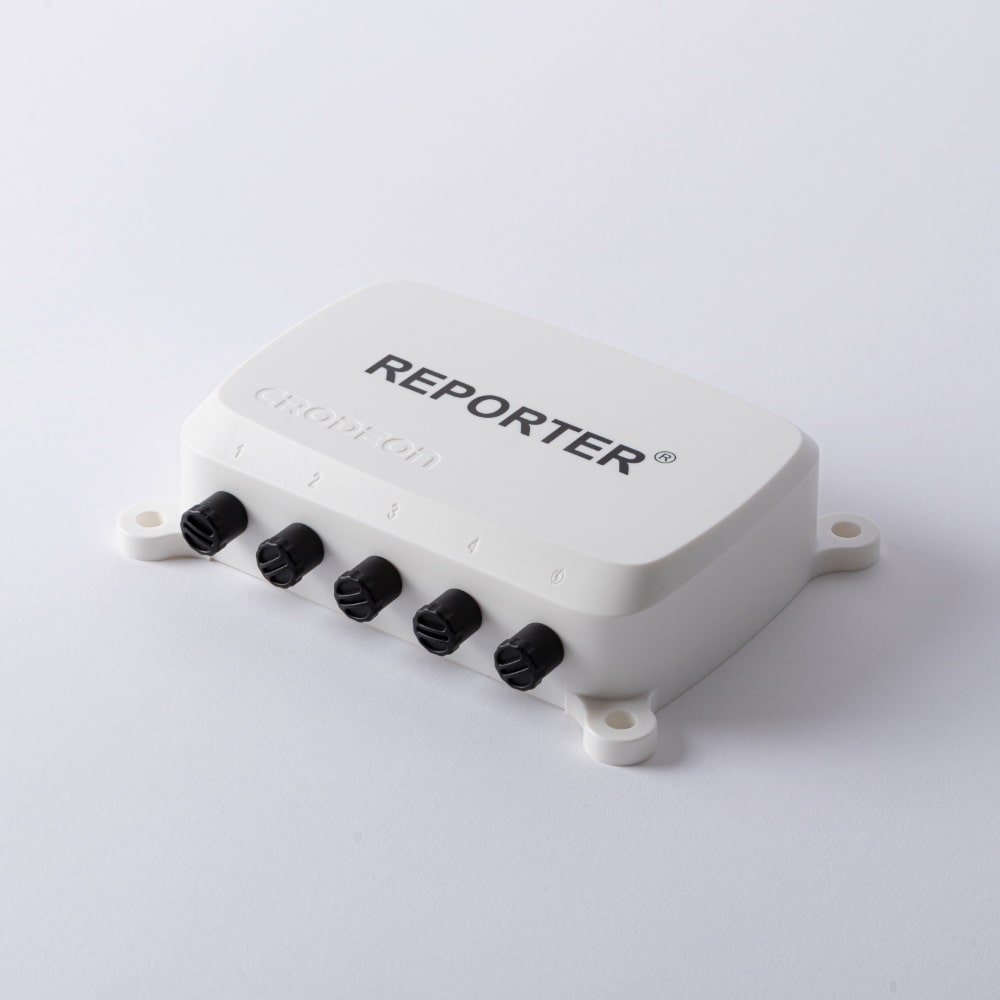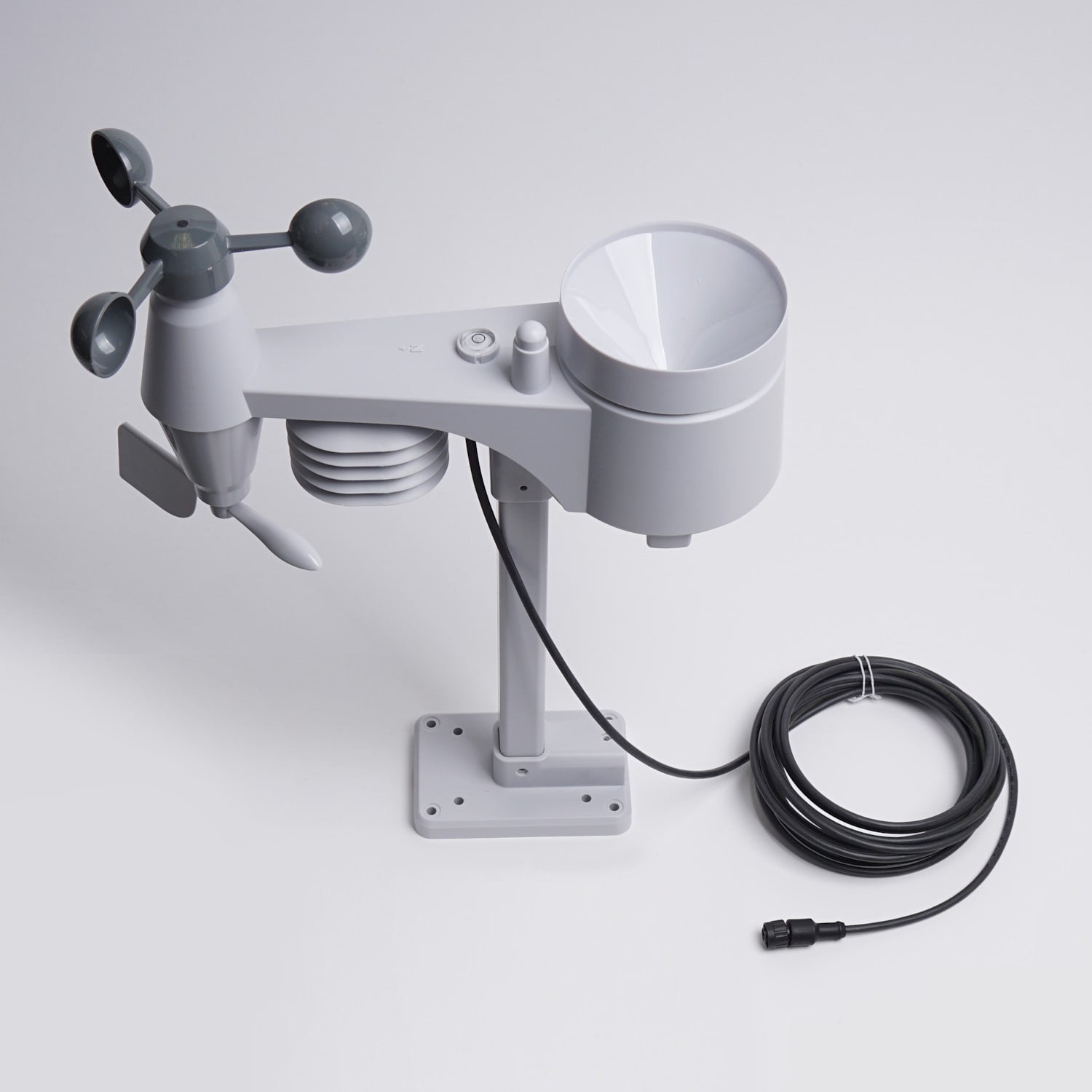Wind monitoring and wind speed measurement

Wind monitoring can be relevant for a plethora of reasons: keeping festivals safe, tracking industrial odour, doing research on a construction site or monitoring airflow in between buildings.
Measuring wind at several different spots is no easy task. Most weather stations offer only one wind sensor for wind measurement and building your own sensor system from scratch is expensive and difficult. We'll discuss an easy and affordable system that allows extensive wind direction and wind speed monitoring.
Why you should monitor wind speed or measure the direction of wind
Wind speed monitoring and wind direction measurement add some real value when you want to determine the dominant direction in which the air flows and how fast. These measurements can be relevant for safety reasons, environmental regulations, research or pure data collection. Wind speed is measured by an anemometer, wind direction by a wind vane. All-in-one weather sensors usually contain both of these sensors.
Monitoring air flow between buildings
Sometimes because of construction errors, heavy winds may be registered between buildings. Just as annoying are currents of air flowing inside a building, causing doors to slam or paperwork to blow around. Wind & current monitoring could therefore help you out with determining what causes the problem.
This phenomenon is often attributed to a door or window that is left open, but a more complex architectural matter might be the cause. In this case, you need sensor data to find out when and where the wind is blowing.
Wind measurement for a wind turbine
The most obvious goal of measuring wind at different heights is when you're planning to install your own wind turbine. On farms or industrial companies, the advantages of generating your own energy are numerous.
As a farmer or plant manager you want to determine the best spot to locate your turbine in order to optimise the return. It is recommended to gather sensor data during a period of time through remote wind monitoring so you can make the right decision.

Wind speed monitoring for festivals
In 2011 a Belgian festival suffered a great loss at the hands of a local storm. Ever since, rules and regulations surrounding tents, stages and other tall constructions at festivals, have been made more strict. Mandatory wind monitoring is a direct consequence of the 2011 tragedy.
Many festivals use local weather stations with remote wind monitoring for their wind speed measurement. Read more about how Lokerse Feesten and Sunrise Festival use weather sensors for monitoring at their site.
Measure the direction of wind on a construction site
Cranes and scaffolding can be badly damaged by storms. A construction site is not safe to work on in rough weather. Heavy machinery should be prepared to be wind-safe, cranes need to be able to swing freely and banners should be removed from scaffolding.
A local weather station for wind speed measurement can even send out alarm notifications that warn you when a gentle breeze turns into a raging storm. Read more about a weather station to keep cranes and scaffolding safe.
Wind & current monitoring to conduct research prior to the construction of large buildings
When constructing large buildings, it can be important to see if a specific location is subject to a certain weather pattern. Let's take a skyscraper for example, prior to construction it would be wise to monitor whether the specific location suffers from strong winds during a particular season.
Wind direction measurement for factories and industry
Monitoring wind direction can help you take the right decision in case something goes wrong in your factory. Certain factories cause smell and sound during their production process. When something goes wrong these smells or sounds may escape the industrial chimneys and cause a nuisance in the neighbourhoods surrounding the industrial site. Accurate wind direction measurement for odour monitoring gives you the opportunity to warn your neighbours about the incident.

Wind monitoring with Reporter
Reporter is our plug & play sensor module that's perfect for remote wind monitoring and measuring. The device is able to measure anywhere as it's autonomous and mobile. You can set your measurement interval between every 30 seconds or every two hours.
Through cellular data Reporter sends its data to the cloud in real-time. Here you can view your data whenever you want. No WiFi in the middle of nowhere for wind measurement? No problem! Reporter has its own connection.
Power too is accounted for as Reporter is able to fully operate on solar power alone. A small, but powerful solar panel charges Reporter during the day and the internal battery powers Reporter all through the night. Measurements continue 24/7 and you can trust Reporter to keep an eye out for you.
One of Reporter’s key features is the built-in alarm system. In the cloud platform (Crodeon Dashboard) you're able to set alarm thresholds for whatever you're measuring. For example, you can set an alarm when wind speed measurement exceeds 40km/h. Whenever such a threshold has been exceeded, you will receive an alarm notification on your phone or email.
How to connect multiple different wind sensors to one Reporter
Most weather stations that are commercially available connect only one wind sensor. This means in order to get multiple measurements for wind & current monitoring for instance, you would need several of these fully equipped stations. This can get expensive quickly.
That's where our technology comes in. Reporter has up to four universal M12 connectors, that fit any of the sensors from our shop. This also means you can connect up to four of the same wind speed monitoring sensors at the same time. Essentially this is a Crodeon weather station plus three extra all-in-one weather sensors.
Getting the hardware connected is a piece of cake. Each sensor comes with a waterproof M12 cable suited for outdoor use. All sensors are powered either by grid or solar power, making wind tracking possible even in remote areas.
For this demo project we connected three all-in-one weather sensors to one Reporter. This meant we were measuring wind speed, peak speed and direction three times, but also temperature, humidity and rain.

How to access wind measurement data in the cloud
Sensor data is transferred using 2G or 4G to the cloud, where you can access it on the Crodeon Dashboard. Nothing special here. The Dashboard allowed us to configure the measurement interval and alarm thresholds. When we wanted to dive deep into the data collected by the wind monitoring, we used the Excel export.

We also offer a weather API to integrate the wind-measuring data into your own platform. Many companies already have some kind of data platform and prefer to have all data in one app. You can call the API every minute without issue.
Feel free to reach out if you have any questions about wind tracking or how to measure the direction of wind. Don’t hesitate to contact us if you need assistance with your own Smart Weather projects.
FAQ about remote wind monitoring
How do you monitor wind?
Wind monitoring is done using wind sensors (wind vane & anemometer). When you buy an all-in-one weather sensor, both of these sensors are included. The Crodeon weather station streams this data to a cloud platform in real-time.
How do I check my wind data?
The Crodeon weather station sends its data to a cloud platform in real-time. Here you can watch your live data or dive deeper into your historic measurements. Historical data can be downloaded and imported into Excel.
How do you find the wind direction of a location?
A weather station will measure the direction of wind through its wind vane. A weather sensor has to be calibrated using the North arrow on the top. The wind direction measurement will be sent to the cloud platform where you can watch all your live data.















